Google Pixel 7 vs. Samsung Galaxy S22: Where value matters
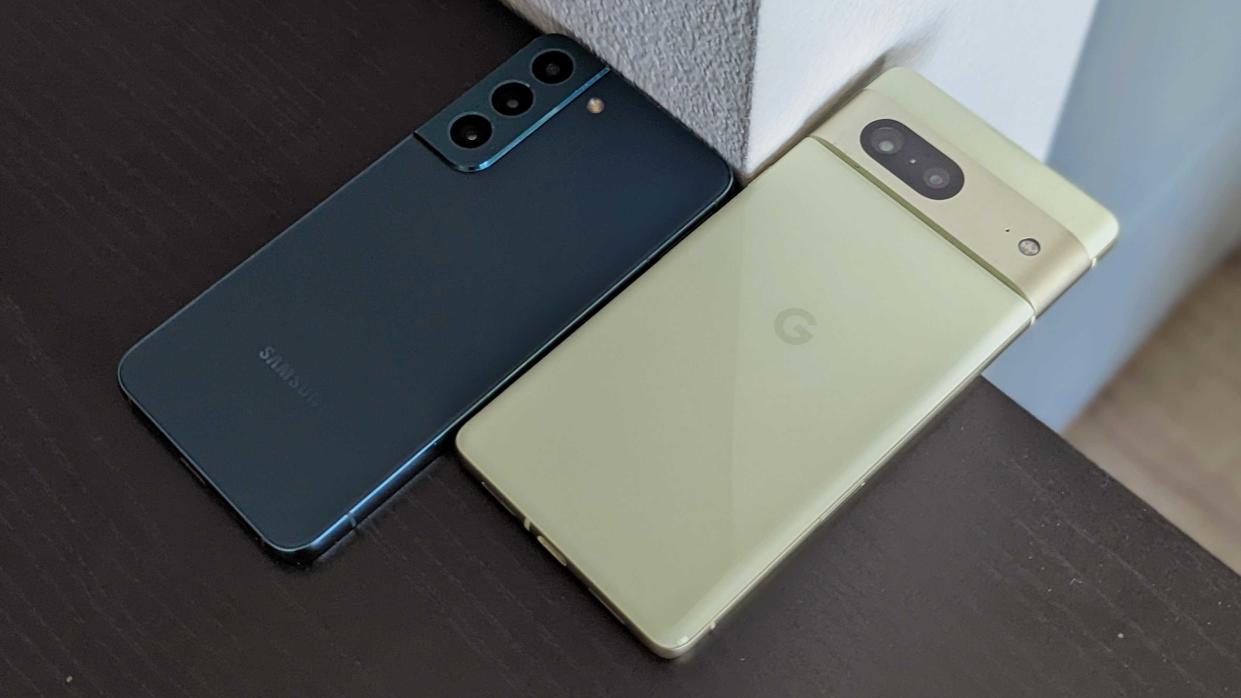
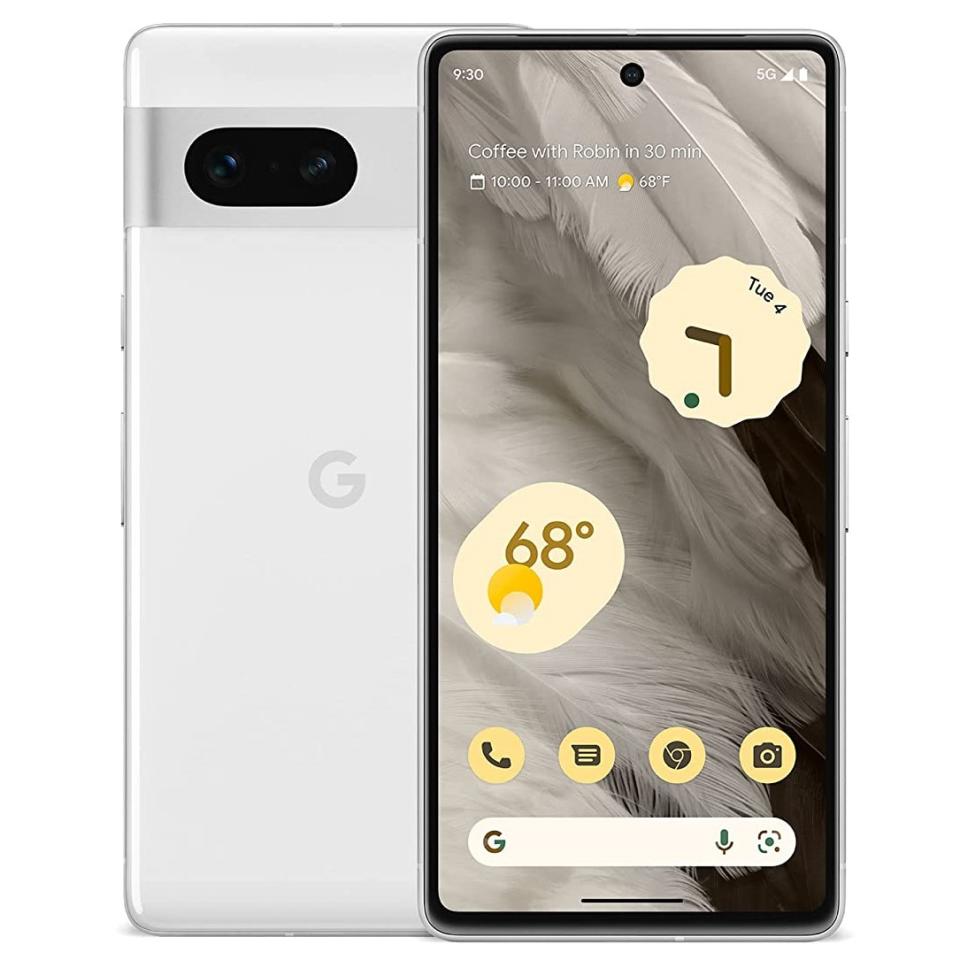
Google Pixel 7
The new standard
The Pixel 7 is Google's latest flagship phone, taking what we loved about the Pixel 6 and refining it. Thanks to the new Tensor G2, the Pixel 7 has tons of useful AI features to discover.
For
Lots of fun camera features
Unique design
5-year software promise
Cheaper
Against
No telephoto
90Hz display
Only three OS upgrades
Slower charging without a Google charger

Samsung Galaxy S22
The old standard
Samsung's Galaxy S22 may be small, but it packs a big bite thanks to the Snapdragon 8 Gen 1. Not only does it perform fast, but it has a smooth 120Hz display and great cameras to capture subjects from different focal lengths.
For
Versatile triple camera setup
Sleek design wide selection of colors
Smooth 120Hz display
Great performance
Against
Can get really hot
Slower to receive new OS upgrades
Slow shutter speed
Expensive
Google's latest flagship is finally here, and while it's not a giant leap forward from the Pixel 6, the new Pixel 7 is still an impressive phone, at least on paper. Given the timing of its launch, the Pixel 7 is expected to go up against some of the best flagships from 2023. However, since we don't have those yet, we'll have to compare it with 2022 flagships such as Samsung's Galaxy S22.
Both phones represent entry-level flagship phones, making it an appropriate comparison. Yet, with an already somewhat-outdated chipset and smaller display, can the Galaxy S22 hold a candle to the newer Pixel 7? Now that I've spent some time with Google's latest flagship, I can tell you how both phones perform in the real world.
Google Pixel 7 vs. Samsung Galaxy S22: Looks are everything
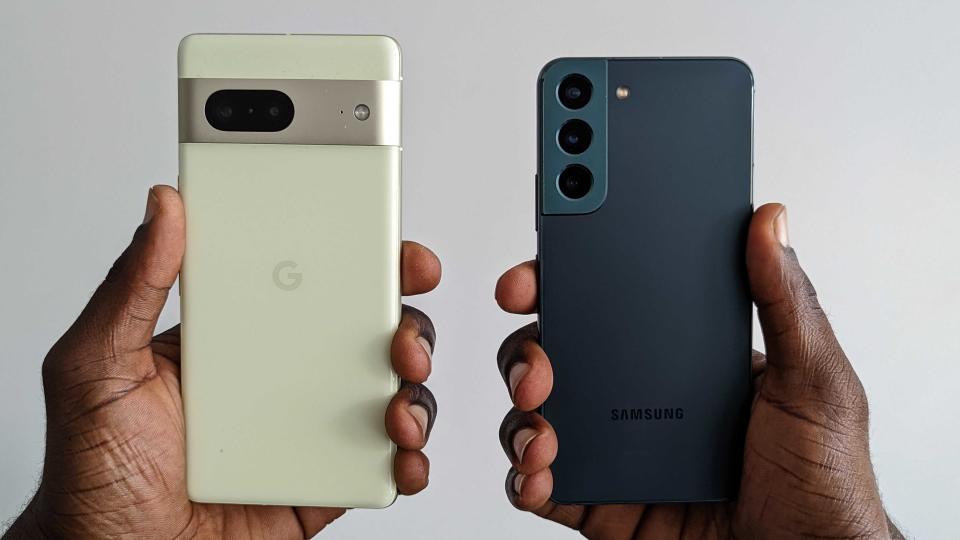
They say looks aren't everything, but they're definitely important. Samsung seemed to always put its best foot forward regarding design, something Google didn't really figure out until the Pixel 6 series. That said, Google pretty much nailed it with last year's flagship, giving it a sleek design that actually looked like a flagship phone. That design language continues with the new Pixel 7, which looks absolutely gorgeous with its glossy chassis, flat display, and unique camera visor.
Both the Galaxy S22 and Pixel 7 sport similar designs compared to their respective predecessors and are largely refinements of what came before. However, the small changes really matter. For instance, the Pixel 7 has a camera visor that is covered in mostly aluminum, replacing the glass from the Pixel 6. This way, only the camera sensors are exposed, and there's much less concern about the visor cracking due to a fall.
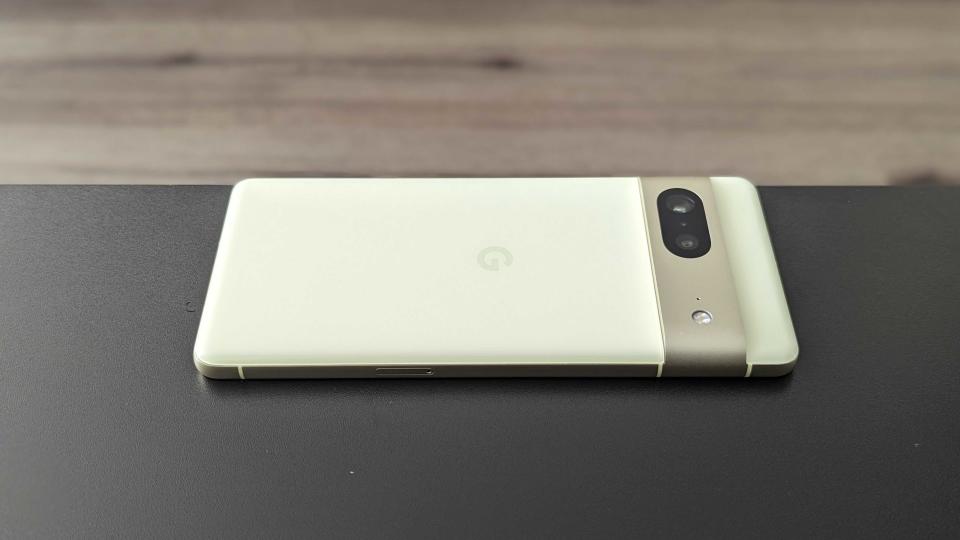
For the Galaxy S22, the differences are minimal. The sides, for example, are much flatter, which actually gives the phone a pretty nice aesthetic. Dare I say; it's almost iPhone-like. Of course, whether or not you like that is entirely up to you. The Pixel has more rounded edges, and if it's anything like its predecessor, it'll have a slippery back that may warrant putting a case on to avoid dropping it. The Galaxy S22 has frosted glass on the back, which isn't very slippery and less prone to fingerprints. However, the flat edges can make for a less comfortable experience when holding the device. Still, both devices feel great in hand.
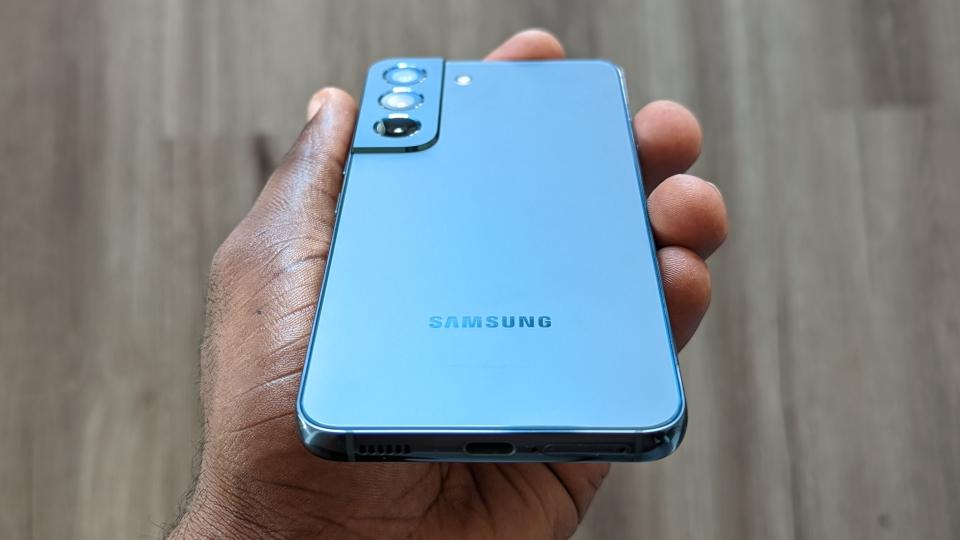
One place where the Galaxy S22 wins is the color options. The Pixel 7 keeps things reasonably simple with black, white, and a somewhat unappealing yellow. The camera visor is colored slightly differently from the rest of the chassis in gray, silver, and gold to match the respective color options. Still, there isn't an extensive list of colors to choose from, and the ones present are either dull or just ugly.
Meanwhile, the Galaxy S22 comes in several base colors, including a beautiful green that looks mostly blue, depending on the light. There are also a handful of exclusive colorways you can buy directly from Samsung, giving consumers plenty of options for a phone that matches their personal style.
Google Pixel 7 vs. Samsung Galaxy S22: Hardware and specs
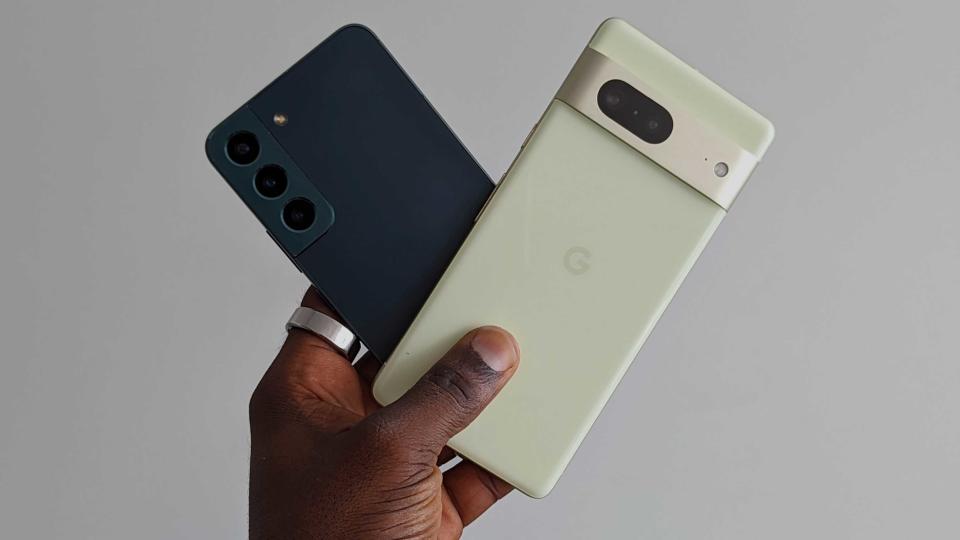
Now that we're done judging a book by its cover, let's talk hardware and specs. Both of these phones launched with the latest chipsets of their respective times. For the Galaxy S22, that was the Snapdragon 8 Gen 1, while the Pixel 7 gets a brand-new Tensor G2 chip.
The Snapdragon 8 Gen 1, which started shipping on phones in early 2022, had its share of problems, particularly with heat management. These were well-documented on the Galaxy S22, and in my use, the phone still gets hot while performing the simplest of tasks. That said, the Galaxy S22 is still speedy and performs well, even while gaming. Just put a case on, and you won't really notice the heat.
The new Tensor G2 chip appears to be an iterative upgrade to the original Tensor. Still, the Pixel 7 performs admirably since it's Google's in-house design, and the phone is just as responsive as one would expect from a Pixel flagship.
Google Pixel 7 | Samsung Galaxy S22 | |
|---|---|---|
Operating System | Android 13 (Pixel UI) | Android 12 (One UI 4.1) |
Display | 6.3-inches, FHD+ (1080 x 2400), OLED, up to 90Hz | 6.1-inches |
Chipset | Tensor G2 | Snapdragon 8 Gen 1 |
RAM | 8GB | 8GB |
Storage | 128/256GB | 128/256GB |
Battery & Charging | 4355mAh, 21W wired, 20W wireless | 3,700mAh, 25W wired, 15W wireless |
Rear Camera 1 | 50MP, wide-angle, ƒ/1.85, 1.2μm | 50MP, wide-angle, ƒ/1.8, 1.0μm |
Rear Camera 2 | 12MP, ultrawide, ƒ/2.2, 1.25μm, 114° | 12MP, ultrawide, ƒ/2.55, 1.4μm, 120° |
Rear Camera 3 | ❌ | 10MP, telephoto, ƒ/2.4, 1.0μm, 3x zoom |
Selfie Camera | 10.8MP, ƒ/2.2, 1.22μm, 80° | 10MP, ƒ/2.2, 1.22μm, 92.8° |
Connectivity | 5G (sub-6, mmWave), Bluetooth 5.2, Wi-Fi 6E | 5G (sub-6, mmWave), Bluetooth 5.2, Wi-Fi 6 |
Protection | IP68, Gorilla Glass Victus | IP68, Gorilla Glass Victus+ |
Dimensions | 73.2 x 155.6 x 8.7 | 70.6 x 146 x 7.6mm |
Weight | 197g | 167g |
Colors | Obsidian, Snow, Lemongrass | Phantom White, Phantom Black, Green, Pink Gold, Bora Purple, other Samsung-exclusive colorways |
When it comes to on-paper specs, the Galaxy S22 appears to have a bit of an edge over the Pixel 7. For example, Samsung's display may be a bit smaller (and arguably more comfortable to handle), but the Galaxy S22 sports a variable 120Hz refresh rate, which is faster than the Pixel 7's 90Hz. Because of this, scrolling and animations on the Galaxy display should be much smoother.
The Galaxy S22 also has an additional camera sensor on the back for telephoto shots, although we'll talk about that later.
The Pixel 7 definitely wins regarding battery life, given its larger 4355mAh battery. In my use, I can easily get through a full workday if I take the Pixel 7 off the charger at 5 am when I start my day or even the night before. Depending on my use, I can even manage an entire 24 hours on a single charge. The Galaxy S22 gets me nowhere close to this, with the phone practically screaming for a charger by noon.
The Galaxy S22 will top up its battery a bit quicker thanks to a combination of faster 25W charging and a smaller battery capacity. The Pixel 7 supports wired charging up to 20W with a compatible Google charger, which the company says can get to 50% in 30 minutes. This isn't too far from my experience, and while it doesn't have the fastest charging, it can get a decent charge in about half an hour. Fortunately, it fills up faster than the Pixel 6 Pro, which is one of the slowest-charging flagship smartphones I've encountered.
Regarding connectivity, these phones are pretty similar, supporting all the 5G flavors, NFC, and Bluetooth 5.2. However, the Pixel ups the ante with Wi-Fi 6E, while the Galaxy S22 only has Wi-Fi 6.
Google Pixel 7 vs. Samsung Galaxy S22: Cameras
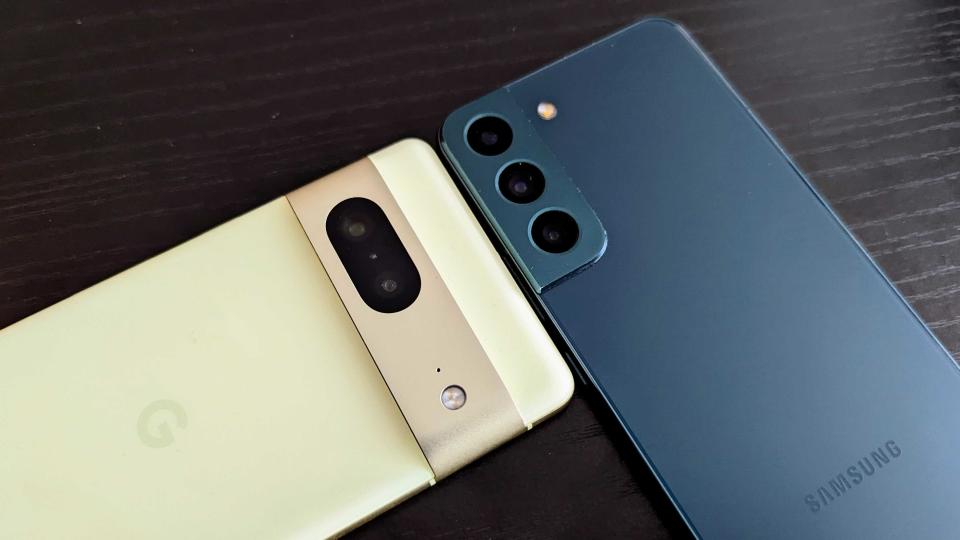
When it comes to cameras, these phones are very similar, at least on paper. Both have 50MP primary shooters and 12MP ultrawide sensors. However, as I mentioned before, the Pixel 7 has an unfortunate disadvantage due to its lack of a dedicated telephoto camera, meaning you'll have to rely solely on digital zoom if you wanna get a good shot of a concert stage and you're somewhere in the back. That said, it's not all bad.
In my experience, the Galaxy S22 takes perfectly adequate images. They're detailed, bright, and plenty vibrant without being overly so. However, while they're quite good, they're nothing to run home about. In fact, if I need a good photo (particularly for a review or something), I'll generally reach for the Pixel 7 first.
It's nothing against Samsung, but Google has really nailed its computational photography. And now that the company has finally adopted newer, higher-resolution sensors, it has many more pixels to work with to create great images. The photos taken with the Pixel 7 just have more depth to them, which in my opinion, makes them look much nicer than what the Galaxy S22 can produce from its primary sensor. The Pixel 7 offers plenty of contrast and detail, even if images aren't as bright as the Galaxy S22. Images from the Pixel are also warmer, which can work in its favor depending on your preference.
And to help with the lack of telephoto zoom, the Pixel 7 has Super Res Zoom. Yet, while the Pixel 7's Super Res Zoom can only reach up to 8x, it's still quite good when compared to the S22's 3x optical sensor.
That is, unless you really need that 30x digital zoom on the Galaxy S22, which has helped me take some fantastic shots of the moon and other far-off subjects. The Pixel 7 can only get me so close, and even though quality degrades the more I zoom with the S22, it still comes in handy for some shots.
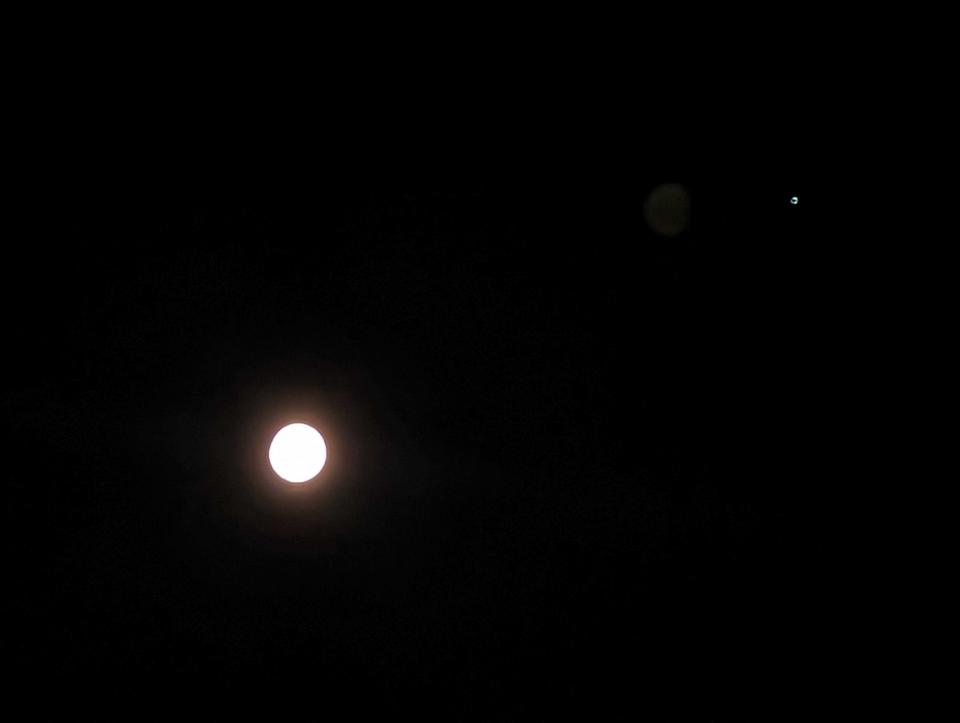
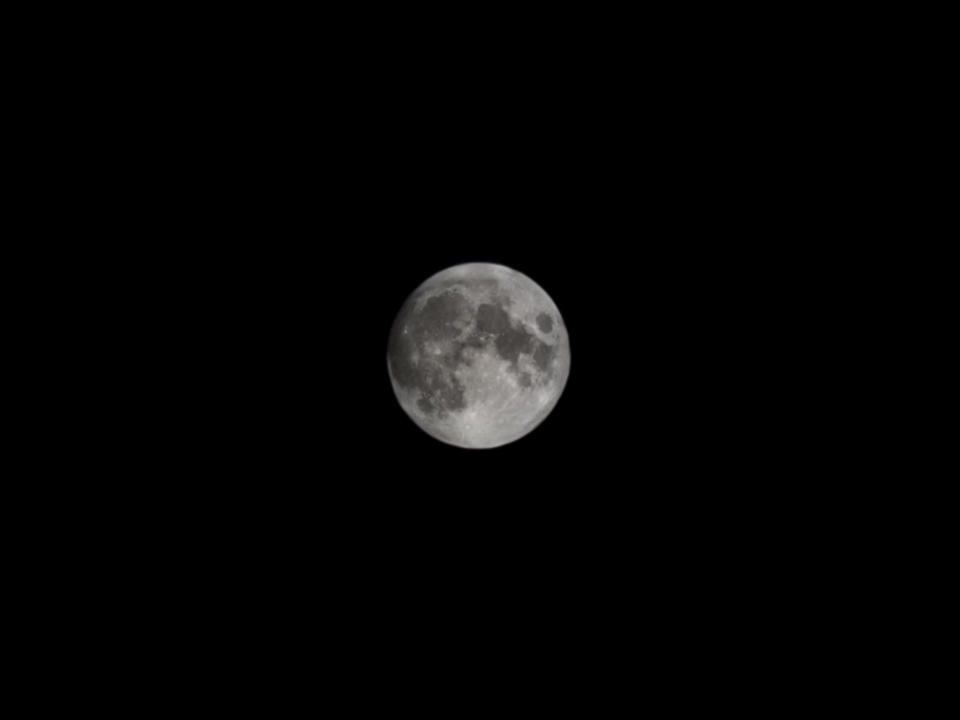
In addition to Super Res Zoom, Google is also touting plenty of features like Motion Mode, Photo Unblur, Magic Eraser, Face Unblur, and tons of other AI-based features to help get you the best possible image. Of course, Samsung also has some tricks up its sleeve too, like manual photo and video modes, Single Take, and Object Eraser, the latter of which I’m quite a fan of.
When it comes to low light, Samsung has really focused on improving on this front and has nailed it, in my opinion. When comparing images with my 7 with Night Mode turned off, the Galaxy S22 pulls in much more light, while the Pixel doesn’t try to brighten up images at all. However, the Pixel really shines (pun intended) with Night Sight on, although I still notice that the Galaxy S22 images are brighter, which seems to be the case in just about any condition.
Google has also improved video capture on the Pixel 7. The Galaxy S22 takes fantastic video up to 4K60 and performs very well in low light. The Pixel series isn't exactly known for video quality, but Google has been improving on this front, particularly with the Pixel 6 series. Now, video can be captured in 10-bit HDR, which I've noticed makes footage a lot more vibrant. The Galaxy S22 can capture HDR10+ video as a Labs feature, which also punches up the footage.
One interesting feature on the Pixel 7 is Cinematic Blur, which is meant to give a movie-like depth of field to your videos by using AI to intelligently blur the background while the subject stays in focus. This feature has worked with varying success on other smartphones, although they never seem to get it quite right. I've tried Portrait Video with the Galaxy S22, and it seems much improved, although really only works with people. The Pixel 7 works with objects, although you'll get better results with faces in the frame. It's not perfect, but both are big improvements over previous attempts in past years.
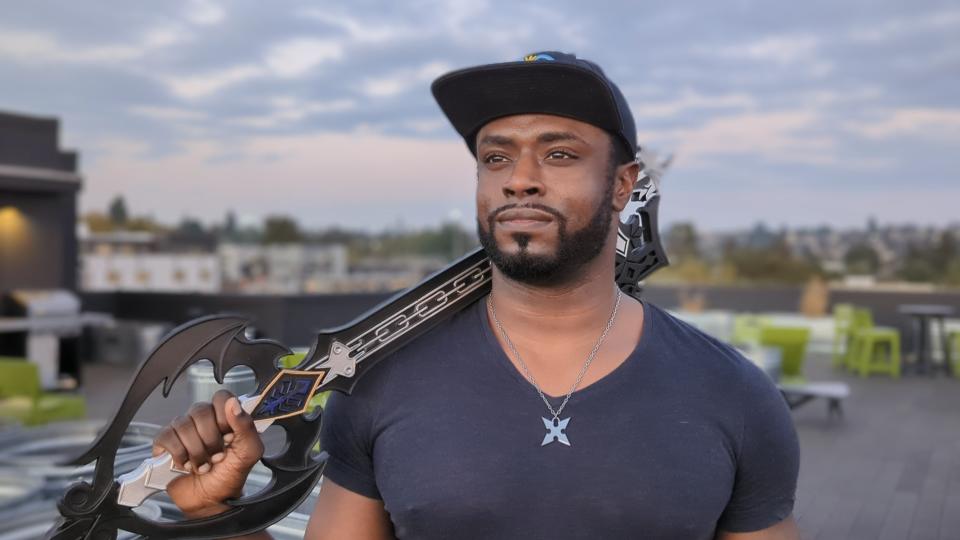
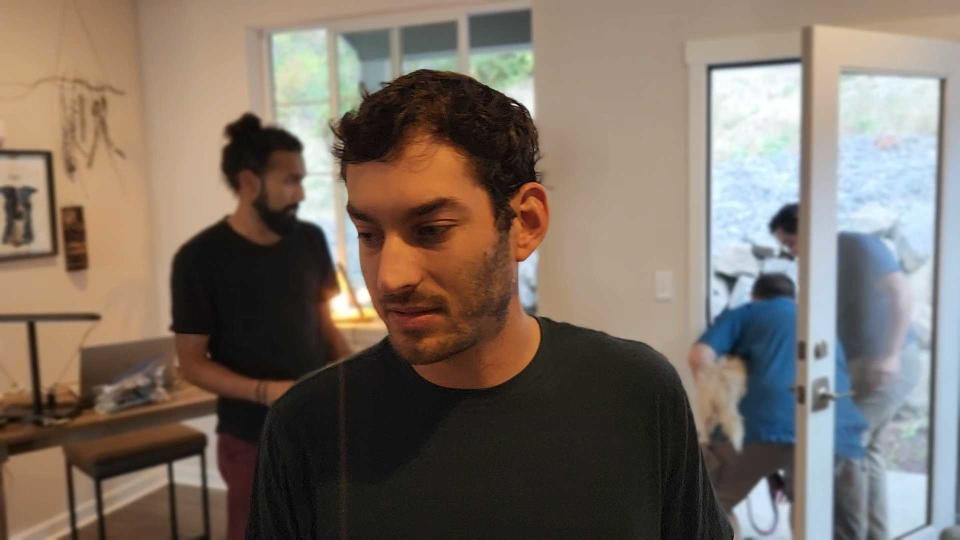
Both take decent selfies, although neither are perfect. The brighter images can work in the Galaxy S22's favor in some scenes, but also work against it in others. Selfies are also a bit soft, which I'm not a big fan of. Meanwhile, the Pixel 7 takes very detailed selfies thanks to the upgraded 10.8MP camera, but they often feel over processed.
I will say that one downfall of the Galaxy S22 camera is its slow shutter button. Sometimes it can take about a second for it to actually capture the image after pressing the button, which can result in some blurry photos or just missing the moment altogether. If you really need an in-the-moment picture, the Pixel 7 will likely get you the fastest and clearest image.
That said, the Pixel 7 doesn't have any manual features for users that really like to take control of the images of video they capture. It's all done with AI. For an amateur videographer like myself, that's a bit of a bummer, as the output from the Pixel may not always come out how you would like. The Pixel does make up for this by allowing RAW capture, but that means you have to go in after-the-fact to edit as opposed to making in-the-moment tweaks.
All-in-all-both phones have great cameras and a lot of fun features. If you prefer brighter images and like to get really close to your subject, the Galaxy S22 is the phone to get. If you prefer more detailed photos with a bit more depth and contrast, the Pixel is your phone.
Google Pixel 7 vs. Samsung Galaxy S22: Software and support
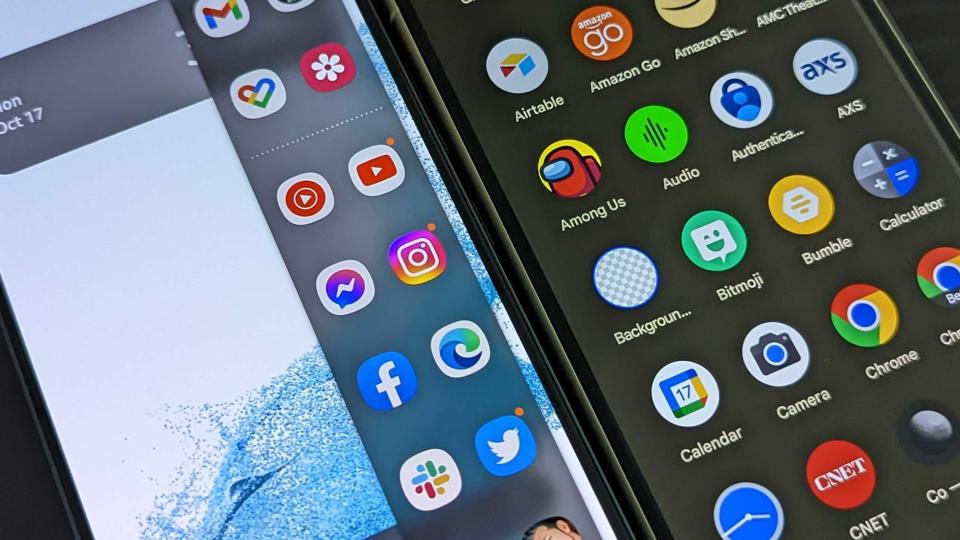
As far as the actual software, both flavors of Android have a different feel to them. Samsung's One UI is much cleaner, in my opinion, although it's almost stoic when compared to the more bubbly Pixel UI. Everything on the Pixel is just bigger, from the brightness and volume sliders to the quick settings toggles and many aspects of the notification shade. I'm not a fan of how the Pixel UI deals with space, as UI elements tend to take up more of it than they should. I personally prefer Samsung's more condensed take on these same UI elements, especially since I can fit up to six quick settings toggles in a single row (although that's being reduced to five with One UI 5).
However, if you care about software support, look no further than either of these smartphones. Both Google and Samsung have upped the ante regarding long-term support, and the Pixel 7 and Galaxy S22 have some of the most impressive support promises of any of the best Android phones.
On the one hand, the Galaxy S22 has a better lifespan, as Samsung has promised four OS upgrades and five years of security updates. Samsung is also quick to update its phones with monthly security patches, often ahead of Google, which sticks to a particular cadence. On the other hand, the Galaxy S22 launched with Android 12 and is set to upgrade to Android 13 soon at the time of writing, meaning it will receive up to Android 16 and an additional year of support. So while the Pixel 7 will receive one less OS upgrade, it will still manage to receive Android 16 since the phone launches with Android 13 out of the box.
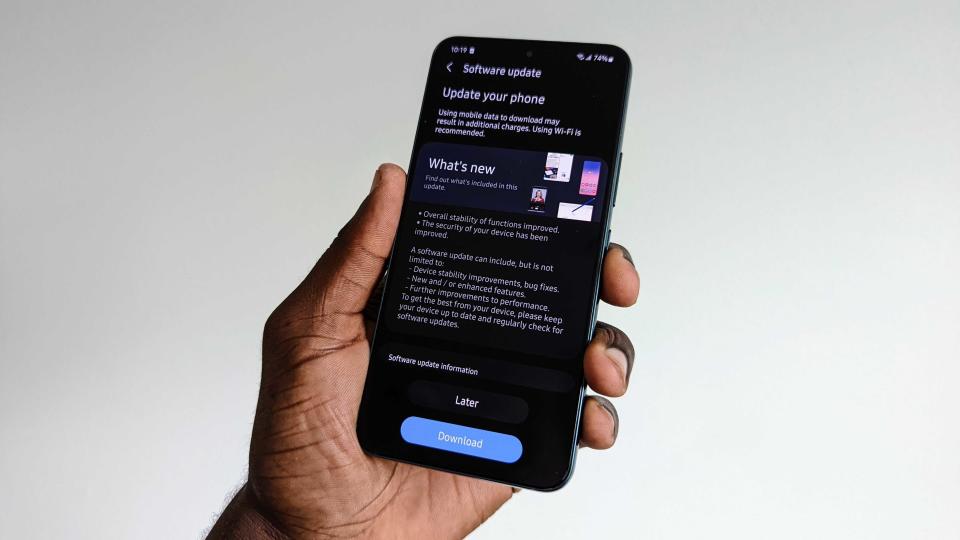
Samsung is known to come with smaller feature upgrades now and then, usually in the form of a point upgrade like One UI 3.1 or One UI 4.1. However, there's not much rhyme or reason to these updates, and we usually have to wait for major releases or quarterly Android feature updates to receive new features.
Meanwhile, the Pixel series would usually receive these new features well before everyone else, thanks to Google's Quarterly Feature Drops. Many features showcased in these updates usually roll out much later to other Android phones, giving Pixel users first dibs on fun new software.
Still, both devices are essentially at the center of their respective ecosystems; Google with the Pixel family and Nest devices, and Samsung with One UI and SmartThings. Fortunately, you can dip into either or no matter which phone you choose, but you'll have the most seamless experience by staying on-brand. So make sure to grab that new Pixel Watch if you're grabbing the Pixel 7 or the Galaxy Watch 5 if you're getting a Galaxy S22.
Google Pixel 7 vs. Samsung Galaxy S22: Which should you buy?
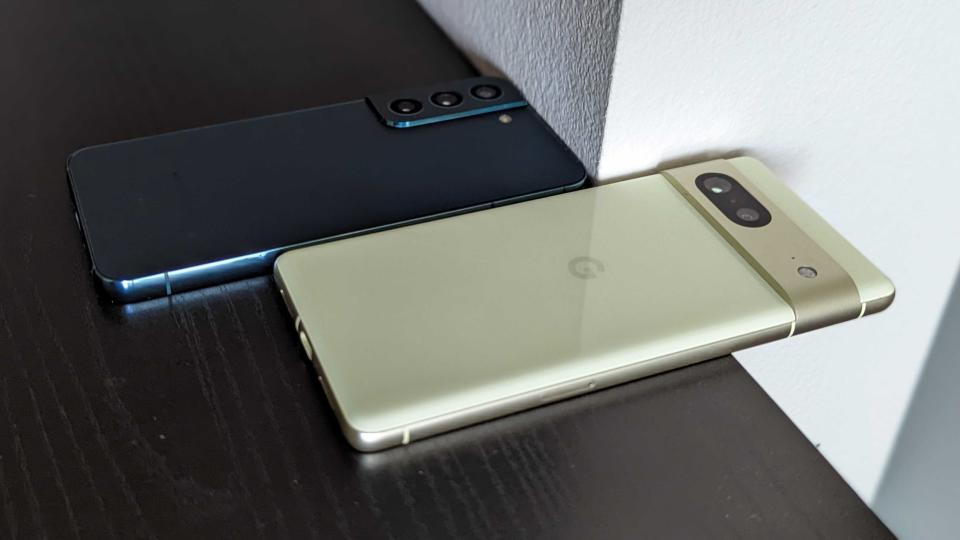
As someone who uses Samsung as a primary device, I have to admit this is a hard one. The Galaxy S22 offers a great software experience with ample support, good cameras, and fast performance, all in a stylish and pocketable design. In fact, during my time with the Pixel 7, I couldn't wait to get back to my Galaxy S22.
However, despite the Pixel's shortcomings, I have to admit that it's probably a better value for most people. The Pixel has excellent cameras that use software to compensate for the lack of a telephoto lens, and image quality is superb. There's no question that Google's imaging prowess is hard to match, and the Pixel 7 is one of the best camera experiences you could ask for on a smartphone.
Not only that, but Google's AI features are extremely convenient and fun, and the Tensor G2 chip should provide steady performance no matter what you're doing. Not to mention, you'll get much better battery life out of the Pixel, which many users look for in a smartphone.
As I said, the Galaxy S22 is no slouch, and I would still recommend it to anyone who asks. However, this is a bit of an awkward time for the S22, especially as rumors of the Galaxy S23 series start to ramp up. The combination of the impending Galaxy S23 launch plus the rather expensive $799 price tag is a bit hard to justify at this point, especially when compared to the $599 Pixel. If you can find some good deals, go for the Galaxy. Otherwise, the Pixel offers much more value.

Google Pixel 7
You won't be disappointed with the Pixel 7. It has the latest chipset from Google, and its upgraded cameras mean the end of blurry images and even faster night shots.

Samsung Galaxy S22
The Galaxy S22 is a bit of a splurge, but with it comes amazing software, great cameras, and a device that performs well no matter what you throw at it.

